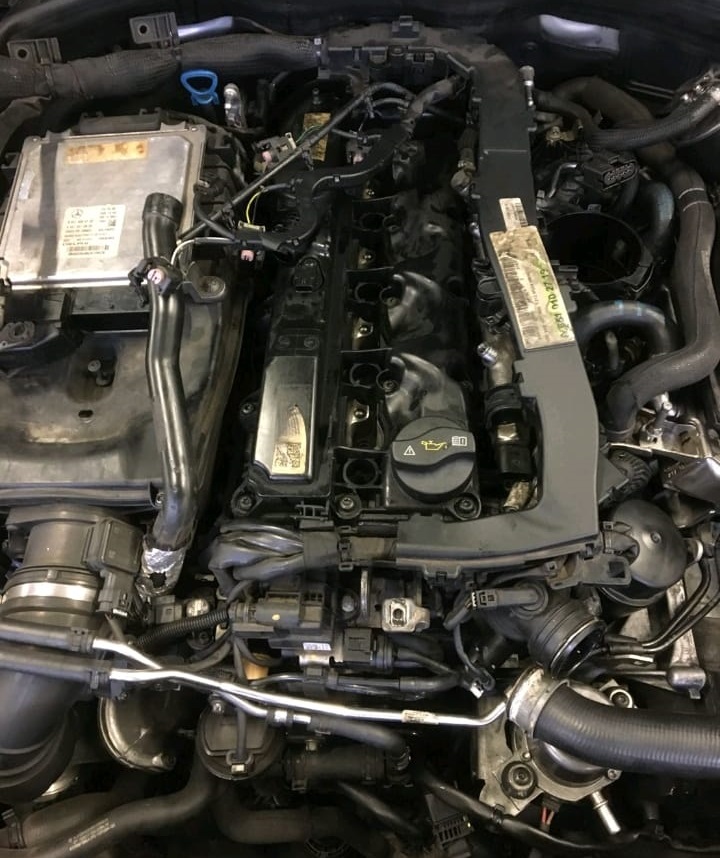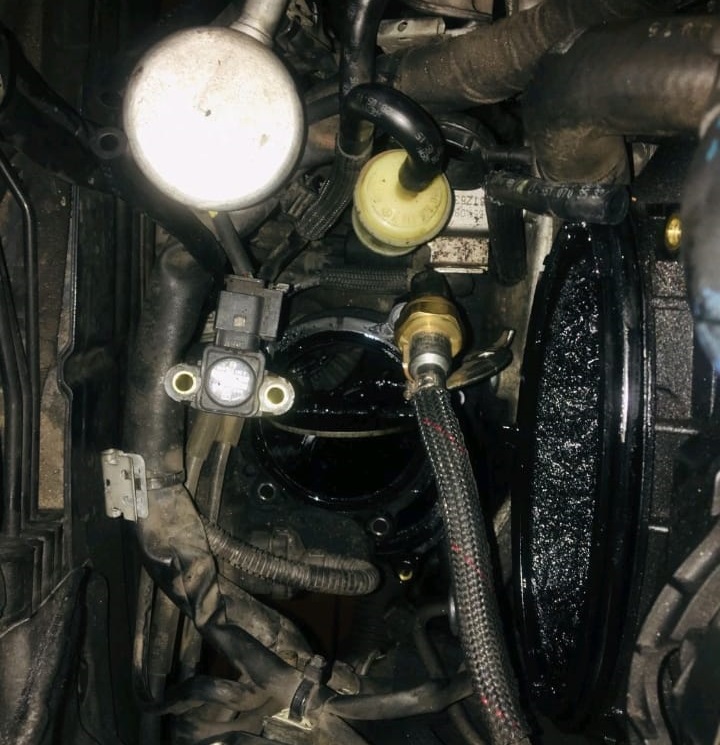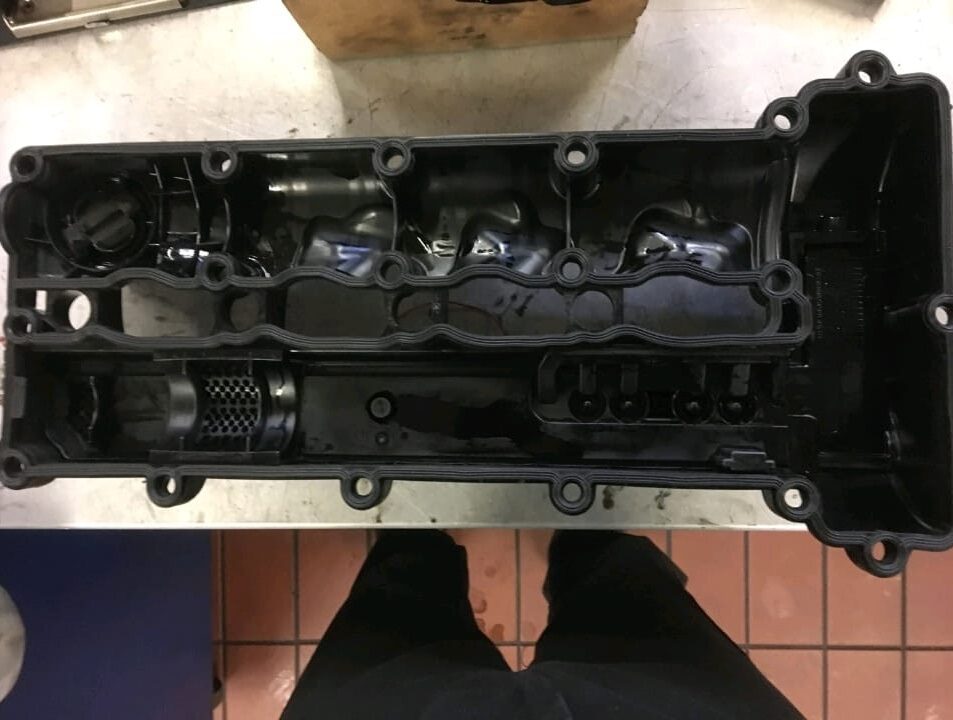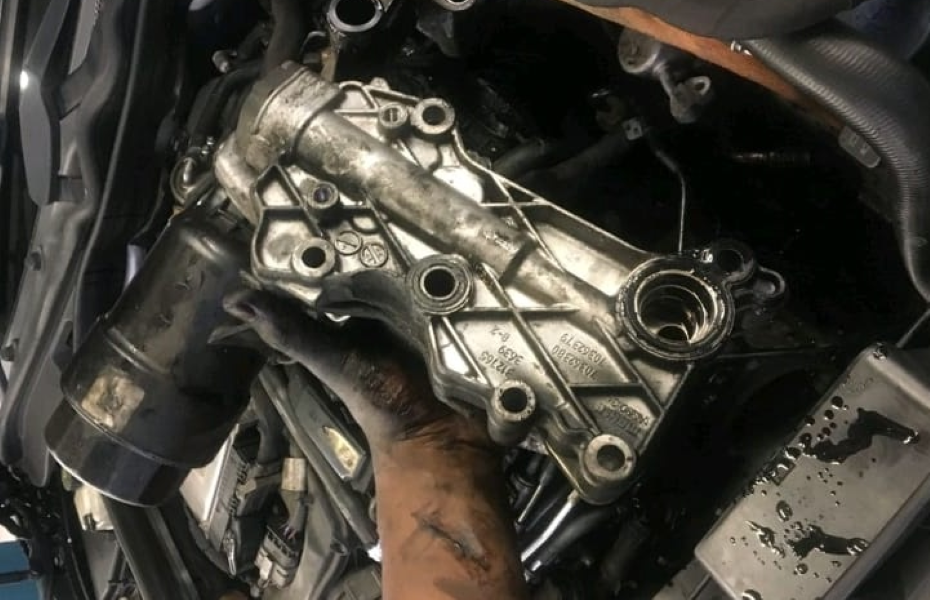Table of Contents
Engine Is Leaking Oil in Mercedes-Benz E Class W212: A Case Study Oil Leaks in OM651 Engine
OM651 oil leak is a common issue many Mercedes-Benz owners face, especially in models like the E-Class W212. What starts as a small oil stain under your car can quickly turn into a serious mechanical problem if left unchecked. The OM651 Engine, known for its performance and efficiency, has a few notorious spots where oil leaks tend to occur like the oil cooler seals or valve cover gaskets.
In this real-world case study, we take you through the exact steps taken to diagnose and fix an oil leak in a Mercedes-Benz equipped with the OM651 engine. From inspection to repair, learn how we solved the issue and restored the engine to factory condition.

Vehicle Overview: Mercedes w212 oil leak
The Mercedes-Benz E Class W212 is known for its luxury, comfort, and performance. However, like any vehicle, it can encounter mechanical issues over time. One such issue is an oil leak, which, if left unaddressed, can lead to more significant problems, including engine damage.
In this case study, we’ll focus on a W212 model powered by the OM651 engine, a robust and efficient diesel engine that requires careful maintenance.
Complaint: OM651 Engine Is Leaking Oil
A customer brought their Mercedes-Benz E Class W212 into the workshop with a concerning issue the Engine Is Leaking Oil. Oil leaks can manifest in various ways, from minor drips to significant puddles, and can stem from multiple sources within the engine. The customer’s concern was clear, but pinpointing the exact cause of the leak required a systematic approach.
Diagnostic Process
Upon receiving the vehicle, our first step was to verify the customer’s complaint. Indeed, the Engine Is Leaking Oil, but identifying the precise source of the leak was not immediately apparent.
A thorough visual inspection of the engine was conducted, but the source of the oil leak could not be easily detected. Oil leaks can be tricky, as oil often spreads and accumulates in places far from the original leak, making it challenging to determine where the problem began.
Identifying the Source of the Leak
Given that a visual inspection did not yield definitive results, the next step was to clean the engine thoroughly. By removing any residual oil and grime, we could create a clean slate, allowing us to observe fresh oil as it appeared. This method is crucial when dealing with elusive leaks that are not immediately visible.


After cleaning the engine, we restarted it to monitor for signs of leakage. It didn’t take long for the source to reveal itself the Engine Is Leaking Oil from two specific areas: the oil filter housing and the tapped cover.
Both components are critical in maintaining the engine’s oil pressure and ensuring proper lubrication, so addressing the leak promptly was essential.



Repair and Resolution
With the source of the oil leak identified, the next step was to replace the faulty components. The oil filter housing and tapped cover were carefully removed and replaced with new parts. These components were chosen for their compatibility with the OM651 engine, ensuring a perfect fit and reliable performance.
Once the replacement was complete, we conducted a final inspection to ensure the Engine Is Leaking Oil issue was fully resolved. The engine was started and monitored, and no further signs of leakage were detected. The customer was informed that their vehicle was now in optimal condition, free from the oil leak that had caused concern.

Conclusion
This case study highlights the importance of a methodical approach when diagnosing and repairing oil leaks in vehicles like the Mercedes-Benz E Class W212. The Engine Is Leaking Oil issue was resolved through careful inspection, cleaning, and component replacement, demonstrating that even challenging problems can be overcome with the right techniques.
For Mercedes-Benz owners, it’s crucial to address oil leaks as soon as they are detected to prevent more significant issues down the road. Regular maintenance and prompt attention to any signs of leakage will help keep your vehicle running smoothly for years to come.
Engine oil leak locations
Engine oil leaks can occur in various locations within a vehicle’s engine. Identifying the exact source of an engine leaking oil is crucial for effective repairs. Here are some common engine oil leak locations:
1. OM651 rocker cover leak
- Location: The valve cover gasket sits between the valve cover and the top of the engine cylinder head.
- Leak Signs: Oil seeping out around the edges of the valve cover, especially near the front or rear of the engine.
- Cause: Over time, the gasket can become brittle or damaged, leading to leaks.
2. Oil Pan Gasket
- Location: The oil pan gasket is situated between the oil pan and the bottom of the engine block.
- Leak Signs: Oil dripping from the bottom of the engine, often noticeable under the car.
- Cause: The gasket can wear out or become damaged due to road debris or improper installation.
3. Oil Filter
- Location: The oil filter is typically located on the side of the engine block.
- Leak Signs: Oil leaking near the filter housing or around the filter itself.
- Cause: An improperly installed or damaged oil filter can cause leaks, as can a worn-out gasket on the filter.
4. OM651 oil cooler leak
- Location: The oil cooler lines run from the engine to the oil cooler, usually located near the radiator.
- Leak Signs: Oil leaks near the front of the engine bay, often along the lines or at connection points.
- Cause: These lines can crack or become loose over time, leading to leaks.
5. Front and Rear Crankshaft Seals
- Location: The front seal is located behind the crankshaft pulley, and the rear seal is located at the back of the engine.
- Leak Signs: Oil leaking from the front or rear of the engine, often pooling under the vehicle.
- Cause: Seals can wear out due to age, high mileage, or improper installation, leading to leaks.
6. Camshaft Seals
- Location: Camshaft seals are located at the ends of the camshaft, usually under the timing cover.
- Leak Signs: Oil leaking from the front or rear of the engine, near the camshaft area.
- Cause: These seals can degrade over time, especially if the timing belt or chain has been replaced improperly.
7. Timing Cover Gasket
- Location: The timing cover is located on the front of the engine, covering the timing chain or belt.
- Leak Signs: Oil seeping out from the front of the engine, around the timing cover.
- Cause: The gasket can wear out due to engine vibrations, heat, and age, leading to leaks.
8. Oil Pressure Sensor
- Location: The oil pressure sensor is typically screwed into the engine block.
- Leak Signs: Oil leaking around the sensor or its connection to the engine.
- Cause: A faulty or damaged sensor can cause leaks, as can a worn-out seal around the sensor.
9. Cylinder Head Gasket
- Location: The cylinder head gasket is located between the engine block and the cylinder head.
- Leak Signs: Oil leaking along the sides of the engine block, often mixed with coolant.
- Cause: A blown head gasket can lead to oil leaks, as well as other serious engine issues.
10. PCV Valve (Positive Crankcase Ventilation)
- Location: The PCV valve is typically located on the valve cover or intake manifold.
- Leak Signs: Oil leaks around the valve cover area or excessive oil consumption.
- Cause: A clogged or faulty PCV valve can cause pressure buildup in the engine, leading to oil leaks.
Identifying the specific engine oil leak locations is key to determining the correct repair approach. Each of these locations requires different diagnostic and repair methods, and timely attention to these leaks can prevent more severe engine damage.
— Salim, Mercedes Expert
Independent specialist in Mercedes-Benz diagnostics, CAN Bus analysis, troubleshooting case studies, and EV systems.







Leave a Reply